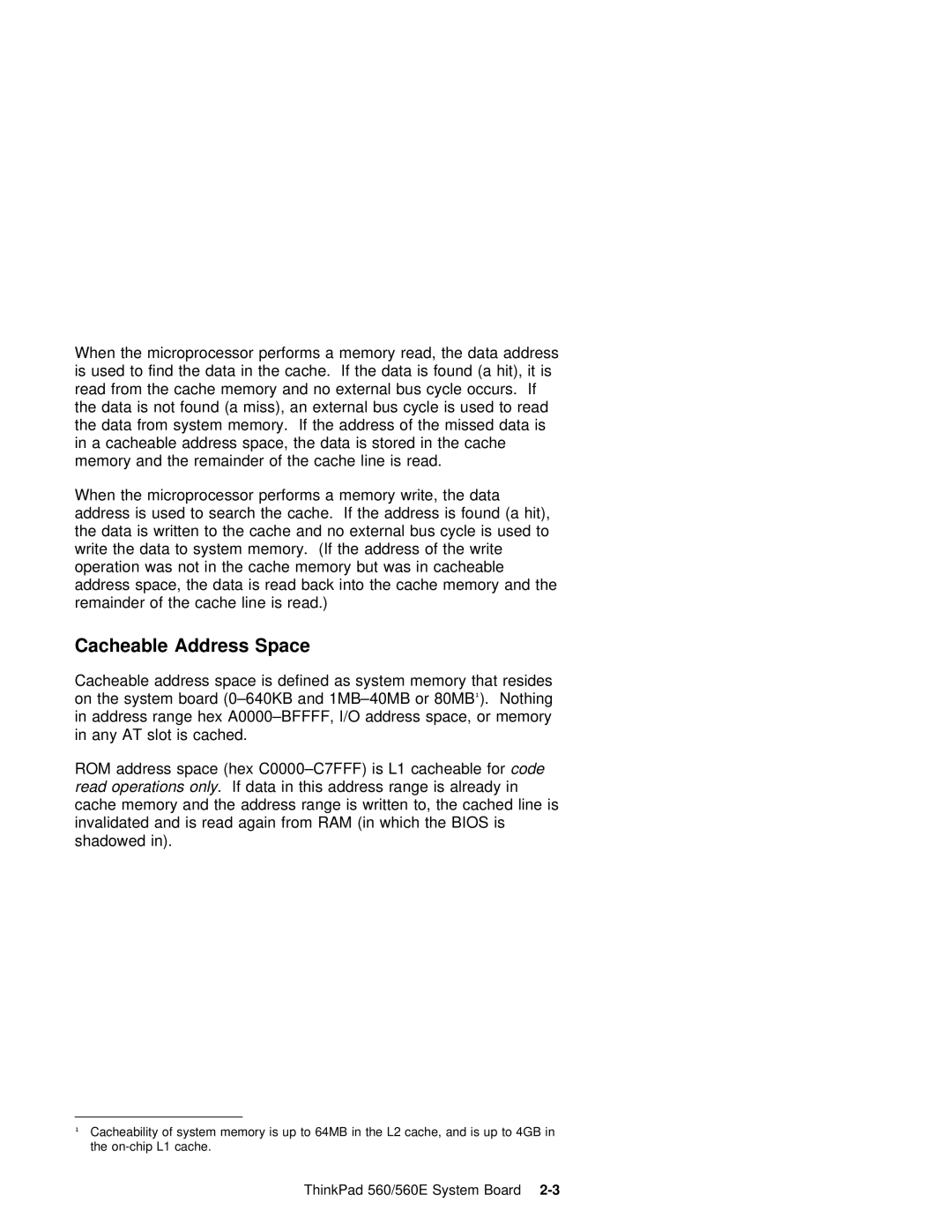When | the | microprocessor |
| performs | a | memory read, the data address |
|
| |||||||||
is used to find the data | in | the | cache. If the data is found (a hit), it is | ||||||||||||||
read | from | the | cache | memory | and | no | external bus cycle occurs. If |
|
| ||||||||
the | data | is | not | found |
| (a | miss), | an | external | bus | cycle | is used to | read | ||||
the | data | from | system | memory. If | the address | of | the | missed data | is |
| |||||||
in a cacheable address space, | the data is stored in the cache |
|
| ||||||||||||||
memory and | the | remainder | of | the | cache line | is | read. |
|
|
| |||||||
When the microprocessor performs a memory write, the data |
|
| |||||||||||||||
address is used to search | the | cache. If the address is found | (a | hit), | |||||||||||||
the data is written to the cache | and no external bus cycle is used | to | |||||||||||||||
write the data to system memory. (If the address of the write |
|
| |||||||||||||||
operation was not in the cache | memory but was in cacheable |
|
| ||||||||||||||
address space, the data is read | back into the cache memory and the |
| |||||||||||||||
remainder | of | the | cache | line | is | read.) |
|
|
|
|
|
| |||||
Cacheable | Address |
| Space |
|
|
|
|
|
|
| ||
Cacheable | address | space | is | defined as system | memory that | resides | ||||||
on | the | system | board | and |
|
| ||||||
in | address | range | hex |
| ||||||||
in | any | AT | slot | is | cached. |
|
|
|
|
| ||
ROM | address | space | (hex |
| ||||||||
read | operations. onlyIf | data | in | this | address range | is already | in | |||||
cache memory and the address range is written to, the cached line is invalidated and is read again from RAM (in which the BIOS is shadowed in).
ñ Cacheability | of | system memory is up to 64MB in the L2 cache, and is up to 4GB in |
the | L1 | cache. |
ThinkPad 560/560E System Board
